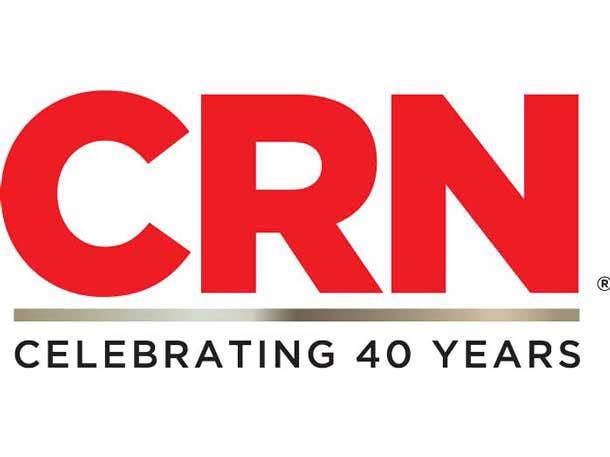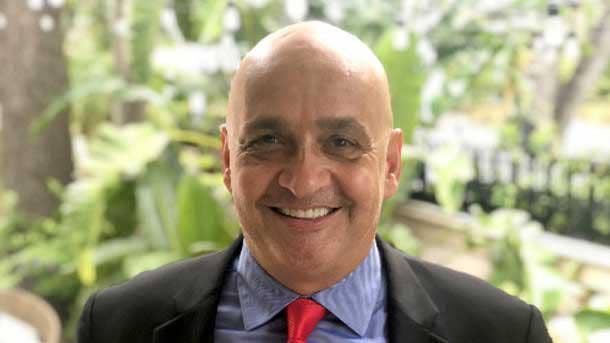12 Futuristic Technologies The Channel Thought We’d Have By Now
In recognition of CRN’s 40th anniversary this year, CRN reached out to various solution provider executives to ask what technology innovation they thought they’d see by now. Here’s what they had to say.

In recognition of CRN’s 40th anniversary this year, our editorial staff reached out to various solution provider executives to ask what technology innovation they thought they’d see by now.
From internet for all and commercial supersonic flight to better ways to charge smartphones, solution providers sound off on what innovation they once thought would be doable by 2022 but hasn’t been implemented yet.
Click through our slideshow to see what solution provider executives had to say.

Kerem Koca
Founder and Co-CEO
Blue.cloud
Tampa, Fla.
In general, it‘s surprising that new technology adoption among organizations that stand to benefit from it is still in its very early stages. Although it is currently possible to implement AI-based predictive management and maintenance for infrastructure purposes (i.e. water, power, HVAC, manufacturing, transportation), these technologies are still a lower priority and likely won’t become relevant on a widespread scale for another three to five years. The key to this adoption is leadership who recognizes the value and ROI to regularly invest in these next-generation technologies.
Real-time data insight such as leveraging data sets with AI for better business decision-making has also yet to realize its fullest potential. We have known this to be a possibility for years but only a few organizations have achieved this level of actionable insight. The logistics industry would be able to feed traffic, weather and other similar data to create smart routes and other performance solutions that are possible with the availability of large data sets.

Sonia St. Charles
CEO
Davenport Group
St. Paul, Minn.
As a kid, I was a fan of the Jetsons. The year 2022 seemed so far away. We’ve seen so many improvements since I was a kid. But by now I thought I’d see flying cars and more functional robotics in our daily lives. We’re starting to see it in business, but not in our personal lives.
AI has come along far, but it’s still scary. The ethics of AI are not yet fully developed. But the Jetsons had a robot maid, which I thought was really nice.
It will be interesting to see what my grandkids will see.

Joyce Mullen
President and CEO
Insight
Tempe, Ariz.
Many organizations are still behind the curve on artificial intelligence and machine learning (AI/ML) adoption, but they are starting to find real-world value in it, such as automating processes to improve speed and accuracy. According to Insight’s recent research, nearly half (48%) of surveyed businesses say optimizing data analytics capabilities for innovation is their top enterprise IT goal in 2022.
Today’s labor shortages are driving prioritization of hyper automation projects across organizations. We’re seeing clients in manufacturing, energy, healthcare and retail using AI solutions like this to essentially do more with less, leading to more personalized customer experiences, more accurate demand forecasting, supply chain optimization and better quality control. Prioritizing AI is allowing organizations to gain competitive advantages, innovate products and services faster, operate more efficiently, and make more informed business decisions in real time.

Shelliy Cymbalski
CMO
iT1 Source
Tempe, Ariz.
How about those futuristic ovens that would make dinner from The Jetsons!
Honestly, I’m surprised Apple hasn’t figured out a way for phones to swap/share power. How many times have we been at five percent? Wouldn’t it be great if someone could transfer power to your phone!

Jon Groves
US CEO
Logicalis
Bloomfield Hills, Mich.
If I had been asked this question early in my career, I would easily produce a list of innovations. With modern IT, rapid innovation has delivered on promised IT solutions. However, one area that I think can be considered is the adoption of 5G in the US. At times, we seem to be a victim of our own success. For instance, the US used to be a laggard in the cellular space simply because we had a very robust PSTN infrastructure. Today, we have the same trend happening in universal wireless. Leveraging the private 5G spectrum and harnessing the agility of the solution to drive better business outcomes is somewhat delayed because of our robust cabling and fiber infrastructures. However, this is a macro IT trend and in time, I believe the US will exploit 5G to its fullest potential.

Phil Walker
CEO
Network Provider Solutions
Manhattan Beach, Calif.
I thought blockchain and the move to Web 2.0 would have been here sooner.

Robert Keblusek
Chief Innovation And Technology Officer
Sentinel Technologies
Downers Grove, Ill.
I know you are probably looking for something specific to networking, data center, cyber security or other technology, but I would go with commercial supersonic flight. I remember the days of the Concorde and you see so many articles on developments in supersonic technology but still we can’t book a supersonic flight yet. Hopefully once they do arrive again, they will be more efficient from a cost perspective so that tickets will be more available to the average person.
If I had to go to traditional system integrator solutions, it would be developments in the areas of cyber security automated hunting and data loss prevention. We have some of that innovation now, but I can see room for improvement both in the accuracy, but also in the costs of effective solutions. We have to be able to more accurately detect compromises along with precise automated AI driven response.

Tanaz Choudhury
CEO
TanChes Global Management
Houston
I genuinely felt like we would have more drone technology in actual society. I did think that it would serve more in terms of deliveries. In our case, I thought it would be more used in law enforcement to stop guys rather than having cars chase them.

Josh Boyd
President and CEO
Technology Lab
Nashville, Tenn.
There’s a need for a new to mid-tier PSA tool to own the marketplace. Connectwise used to be that tool pre-merger. After being acquired, their product innovation stalled and there was an exodus of talent from the company. This has caused a very poor support experience. To make matters worse, they started offshoring account management and support to further cut costs. Autotask is the next candidate up to bat. They have better support, but the product doesn‘t have quite the depth of capabilities. There are a few rising products in the works, but none with a depth of features or support that most MSPs need. Needless to say, there’s a gap in the marketplace.

Joe Quaglia
President
Trace3
Irvine, Calif.
Internet for everyone. About half the world is still not connected.

Joshua Lee
Director Of Sales
VirtuIT Systems
Nanuet, N.Y.
Widely available autonomously driving vehicles – the 10-year-old in me wants to say flying cars from ‘Back to the Future’, but I really thought that by 2020 and beyond that widely available artificial intelligence (AI) driven autonomous cars would be mainstream.

Mark Galyardt
President
XIOSS
Atlanta
I expected to see more as-a-service offerings. There are plenty today. But if you look at the valuation of SaaS companies vs. those of professional services companies like ours, the SaaS model is more lucrative.
I’d like to see water purification-as-a-service. This could be gold. Look at cannabis growers, or golf courses. Cannabis growth takes phosphates and other minerals out of the soil. If these could be recycled efficiently on-site, everything would grow better. Or energy-as-a-service. It would make energy more viable. The electrical grid needs to be modernized.
Technology can assist in a lot of ways. But we need to look for innovative ways to apply the technology. The gap is really the financial model to make things like this more efficient for businesses and people.